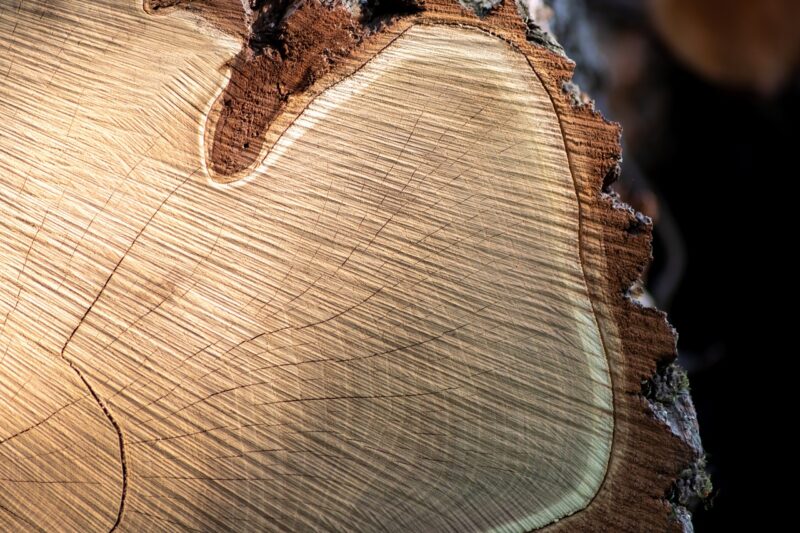Published: 01/10/24 By: Mike Bekin
Most of us have heard the tale of cutting open a tree to count its rings, and you might have even seen the concentric circles on an old stump and thought of counting them yourself. But is this story true or is it a myth? Our EcoChoice experts take a look.
What Are Tree Rings?
Also known as growth rings, tree rings appear as the tree grows outwards. This is because a new layer of bark is added to the tree every year. The layer is actually made up of two parts:
- Earlywood: Bark which is produced in the spring and which creates a lighter and wider band.
- Latewood: Bark which is produced later in the growing season and creates a darker and narrower band.
Can Counting Rings Tell You the Age of a Tree?
Counting rings (known as dendrochronology) is considered a fairly accurate measure of a tree’s age, using each ring to denote a year of growth. Do note, though, that it is not always entirely precise and is not a scientific method of determining age. However, if you are out on a hike and come across a tree stump, counting the rings can give you a pretty good idea of how many years that particular tree was growing.
There are different factors which can contribute to the accuracy of dendrochronology, including:
- Species variation and environment: Rings can be less distinct in different species of trees growing in different regions. For example, those which grow in tropical environments are well-known for having far fewer clear or widespread rings, making it a less effective method of determining age.
- Interruptions in growth: Drought, disease and insect infestations can all cause variations in the growth of a tree, creating ‘false’ rings or missing rings. A year with a drought, for example, might create a very thin ring or the ring may not appear at all, making it harder to count its age.
What Else Can You Tell From Tree Rings?
Aside from age, tree rings can actually tell you a lot about the tree. Just some of the insights to be gained from analysing growth rings include:
- Climate information – differing widths of rings can indicate weather patterns as the tree grew. Thinner rings, for example, tell scientists that this could have been a period of drought.
- Environmental changes – ring variations can reveal information about shifts in soil conditions or human activity, such as deforestation.
- Ecological insights – scientists can study rings to learn more about the history of entire forests, including understanding tree longevity and species competition.
Learn More From Our Timber Experts
At EcoChoice, we love all things timber, including our FSC-certified sustainable timber decking and timber cladding. To learn more about the wonderful world of wood, check out more on our blog or start exploring our products.
If you have any questions about timber, we will be more than happy to help. Get in touch and let’s talk more about your timber projects.
